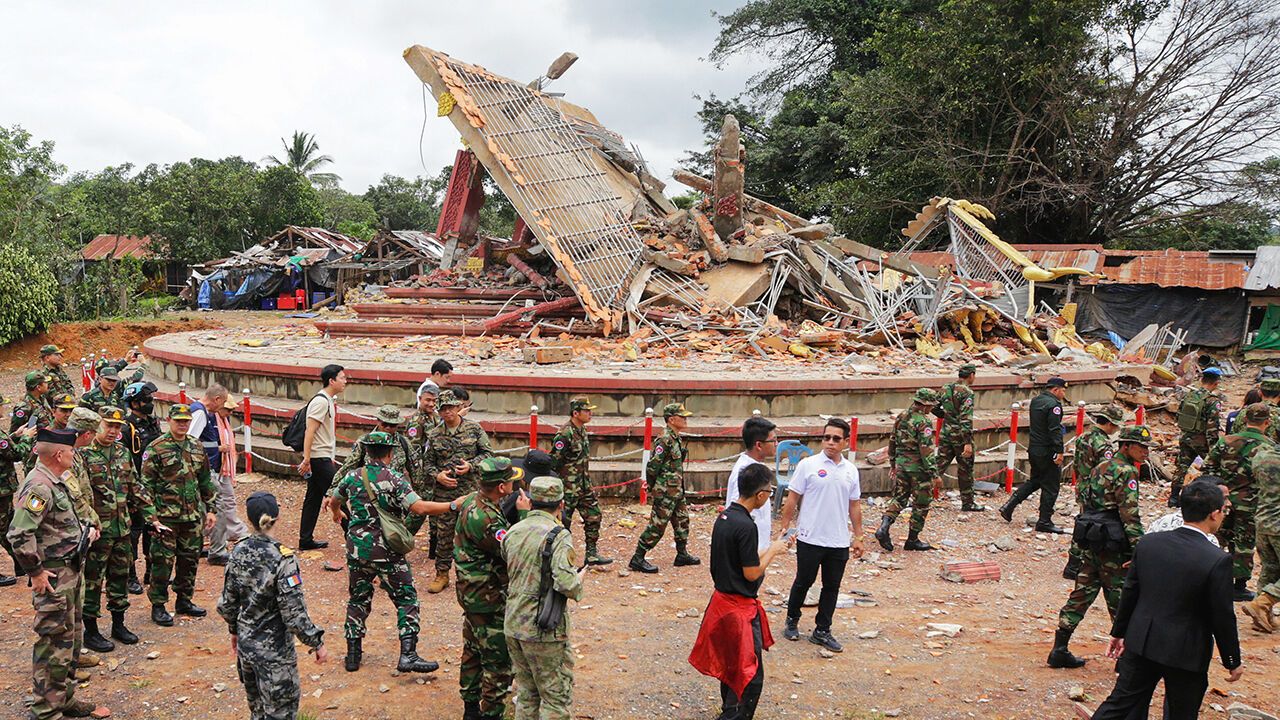Articles in this Cluster
04-08-2025
The brief border war between Thailand and Cambodia erupted around long-disputed territory dotted with ancient Hindu temple sites along steep cliffs. Over five days of clashes that began July 24, roughly 40 people were killed, yet the precise trigger remained unclear amid conflicting claims and nationalist fervor on both sides. The fighting highlighted how unresolved historical disputes, domestic politics, and militarized borders can rapidly escalate, even without a clear strategic objective, turning symbolic heritage sites into flashpoints.
04-08-2025
Thai-Cambodian border tensions abruptly escalated on July 24th when Cambodian artillery shelled a Thai military base and Thailand responded with F-16 airstrikes inside Cambodia—an unusual use of heavy weapons in their long-running disputes. Thailand reports at least 11 civilian deaths and has ordered 40,000 residents near the border to evacuate; casualties in Cambodia are unconfirmed. The clash centers on unresolved, often temple-adjacent border claims that periodically flare, but the scale and speed of this exchange surprised observers and raises risks of broader conflict.
04-08-2025
Cambodia plans to nominate former President Donald Trump for the Nobel Peace Prize, crediting his role in brokering a ceasefire that ended recent border fighting with Thailand. Deputy Prime Minister Sun Chanthol praised Trump’s pressure via trade threats, which preceded a Malaysia-negotiated truce after clashes that killed at least 43 and displaced over 300,000. The move follows similar nominations or endorsements from Israeli and Pakistani officials. Chanthol also noted U.S. tariff reductions that benefited Cambodia’s key garment sector.
04-08-2025
Thailand has imposed a nationwide two-week ban on all drone flights, citing fears that Cambodia could use them for military intelligence amid lingering border tensions despite a July 28 ceasefire. The Civil Aviation Authority of Thailand warned that violators face up to one year in jail and fines up to 40,000 baht (about US$1,240), and security forces may neutralize unauthorized drones. The ban, in effect until at least August 14, applies nationwide and is disrupting tourists, including influencers and hobbyists, some of whom reported confiscations after claiming they were unaware of the rule.
04-08-2025
Thai and Cambodian officials held their first post-ceasefire General Border Committee talks in Kuala Lumpur, choosing neutral ground under ASEAN’s chair, Malaysia, after last week’s deadly border clashes. The four-day meetings aim to formalize ceasefire details following five days of fighting that killed dozens and displaced more than 260,000 people. The ceasefire was brokered with ASEAN mediation; the talks were originally slated for Cambodia but moved to Malaysia to support neutrality and de-escalation.
